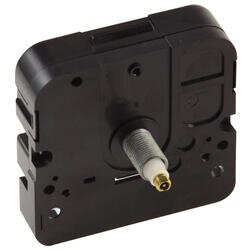
+1310-433-5301
Discover Peace with Quiet Sweep Second Hands

Quiet second hands are ones that move without giving off a distinct tick, which makes them optimal for areas where silence is at a costs, such as bedrooms as well as collections. Because quiet second hands aren't audible, they don't require to replicate the basic tick-and-stop jerky motion of standard clocks, as well as therefore they exhibit a continuous sweeping movement. Let's discover their worth in this write-up.
Second hands that are quiet are provided by a number of manufacturers, as well as they don't all adapt the exact same requirements. The most critical standard to take notice of is that of the shaft (as part of the clock motion) for placing the hands. One typical shaft requirement (called American I) fits hands with installing opening sizes in between 0.030 and also 0.031 inches, whereas, as an example, the Seiko criterion constructs somewhat broader spindles that specify mounting opening diameters 0.004 inches larger.
Snugness of fit is very essential; if the hands aren't snug on the spindle, they will certainly slide and also indicate the wrong time. Hence, although the distinction between these two requirements is imperceptible to human eyes and also apparently of no consequence, the hands made to go with one standard simply will not work with a motion created to a various criterion. Movements have a variety of function collections, and they won't all be replicated for both criteria, so make sure to choose the motion you want, and then pick hands built to the similar standard.
When building a clock from scratch, you order and also put together all the components yourself. The very first part to focus on is the motion (or motor), due to the fact that it determines the full functionality as well as function collection of the timepiece. It is in the choice of activity where you make a decision whether to opt for the traditional ticking used or with a sweeping, quiet one.
After choosing the clock activity, the clockmaker normally focuses on the dial as well as hands they want. This is largely a matter of taste in terms of elaborate or simple designs, various color mixes, and number kinds, however, certainly, the size of the job has to be developed at this moment likewise. As a result of all these factors, you most definitely intend to pick the hands and dial as a system to ensure they match each other.
Selecting the second hand almost gets relegated to an afterthought because there are extremely couple of alternatives. (An apparent selection for attaining silent is to go without a second hand, but if you make that option, make sure to select a movement that does not make an audible tick every second.) There are some stylistic alternatives, but the important point to consider is the hand's color; pursue as terrific a comparison as possible amongst the shades of the dial history, the minute and hour hand combination, and also the second hand.
The three hands are usually not offered as a set, due to the various choices of consumers. The second hand might be thrown in free of charge, but you choose it separately. This implies that you need to define its length, which should be rather shorter than the length of the minute hand; if what you want doesn't match a readily available dimension, choose a much longer one as well as shorten it using wire cutters or shop shears.
Clocks are developed for a broad series of uses as well as purposes, which can sometimes seem surprising, taking into consideration that they are basically instruments for telling time. Nonetheless, modern-day electronic quartz motions not only duplicate the features of typical mechanical clocks, they have the ability to prolong the feature set in a host of various methods. One such way we have been reviewing is how to find peace with continous sweep clock movements.